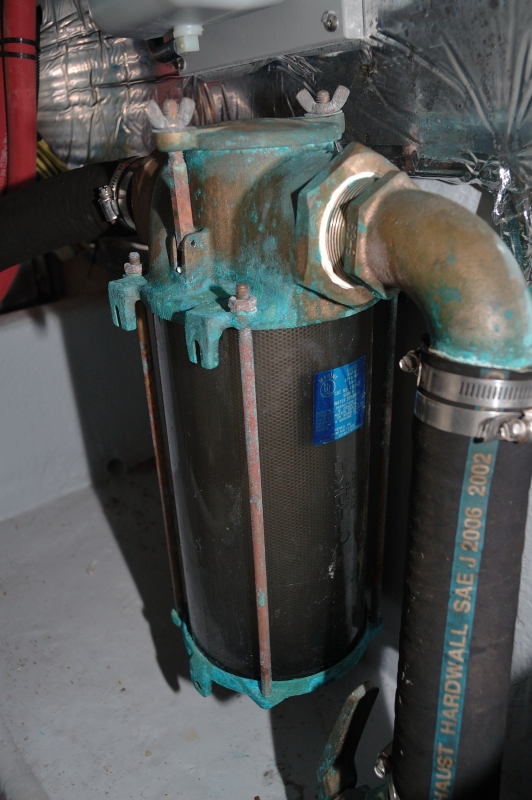Sea Strainer Shouldn’t Strain to Strain
31st August 2023
Raw-water strainers have a vital job aboard the boat, and their need for routine attention is well worth the effort. A sea strainer is a relatively simple device consisting of a removable housing, a clear Lucite shell and a perforated nylon or metal basket insert. Water drawn into the boat flows into the top of the unit and passes through the basket, which is designed to trap debris. The clean water then exits the strainer and flows to its destination, be it the engine, a livewell, the air-conditioning system or watermaker pump.
In some applications, a single, large raw-water strainer or a sea chest built into the bottom of the boat will service multiple systems in place of several smaller units. However it is done, the most critical factor is that plenty of water flows all the time to the individual systems to keep them happy and cool.
Strainer maintenance should begin at the seacocks, which control the flow of water to raw-water strainers. These valves should be exercised at least once a month by opening and closing them a few times when the machinery is not in operation.

After closing the seacock valve, remove the lid on the top of the strainer. Some strainer lids require a wrench, while others simply unscrew by hand. There will be a gasket in the lid, so be careful it does not fall out or get lost. Pull on the handle to remove the basket. And place the basket in a small bucket to prevent the debris from escaping into the bilge.
Moving out onto the dock, dump out the contents, rinse the basket with fresh water and scrub lightly as needed. Reinstall the basket. Some baskets are keyed so it may take a little effort to align the key and get the basket to seat properly. Next, replace the lid, making sure the gasket is not pinched during reassembly. Be careful not to force or cross-thread any of the parts. Open the seacock, check for leaks and you are done.
If the basket is stainless steel, it is important that the handle touches the metal lid of the strainer for proper bonding. If you have to bend the handle to put the lid on, you are incorrectly assembling the strainer, which could result in leaks or galvanic corrosion to the basket. Try twisting the basket in the housing to be sure it slides into position correctly.
Sometimes when removing the basket, debris that was in the filter is disturbed and falls to the bottom of the strainer house. When re-insterting the basket, make sure that there is no debris underneath the basket. If so, it’ll cause the basket to sit too high and therefore may cause leaking when the lid is put back on. Ensure no debris is left on the inside of the housing that can cause the basket to sit too high. Having a small shop-vac is a great idea as it can quickly and easily suck out anything left in the basket, ensuring a proper fit.
If the boat builder installed the raw-water strainer in a convenient location, you typically can look at it to see how much debris has collected. In a dark bilge, you might need to shine a flashlight on the backside of the globe to see inside.
Finally, be sure to thoroughly inspect your boat’s underwater intake fittings each time you haul out. Apply antifouling paint to the inside of these through-hulls, including external scoops and screens, to repel marine growth and maintain adequate water flow to the raw-water strainers.
After cleaning out any sea strainer, all effort should be made to ensure there are no leaks in the system and engine cooling is taking place. Run up the engines and closely inspect the sea strainer fittings and lid to ensure no water is coming out of the sea strainer (or that it’s not sucking any air!). You also want to ensure no airlocks are causing a loss of water flow to the engines that may cause an engine overheat. Run the engines for at least 15 minutes to ensure they come up to temperature and stay at operating temperature and do not rise above that.
Sea strainers should be checked before each trip, because they can go from clean to clogged very quickly depending on what is in the water around you at the time.


